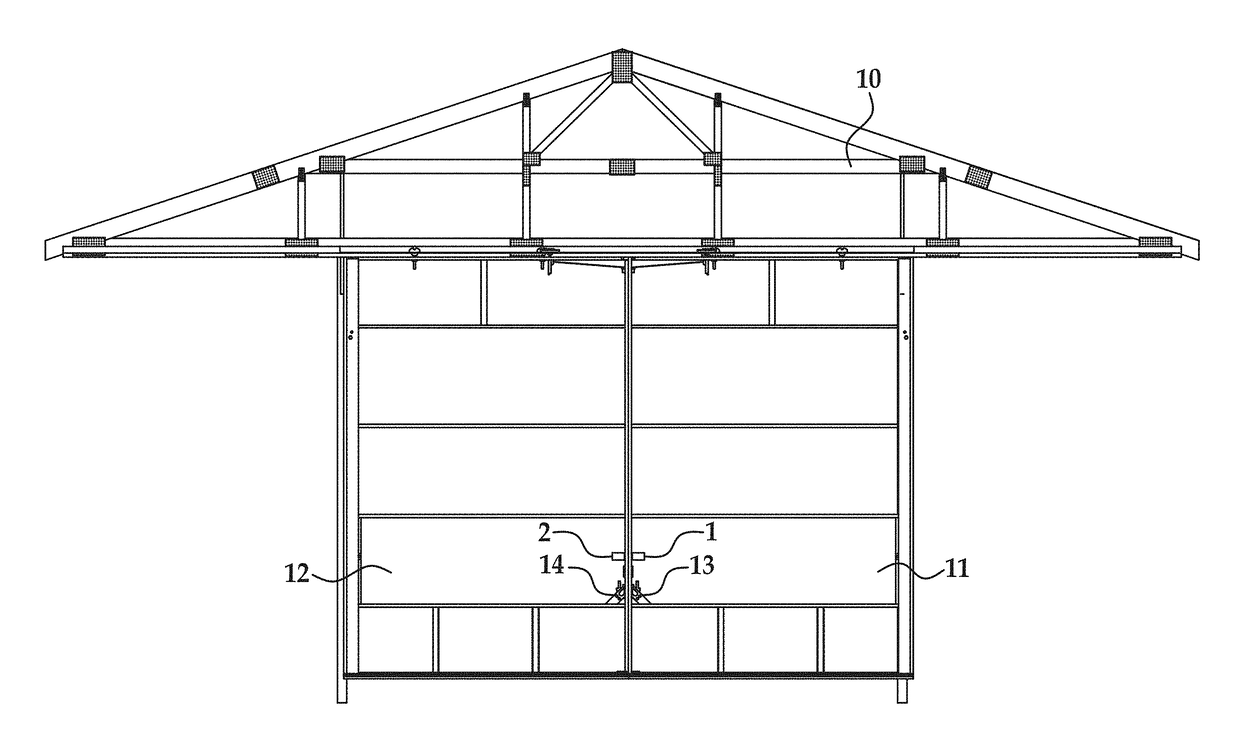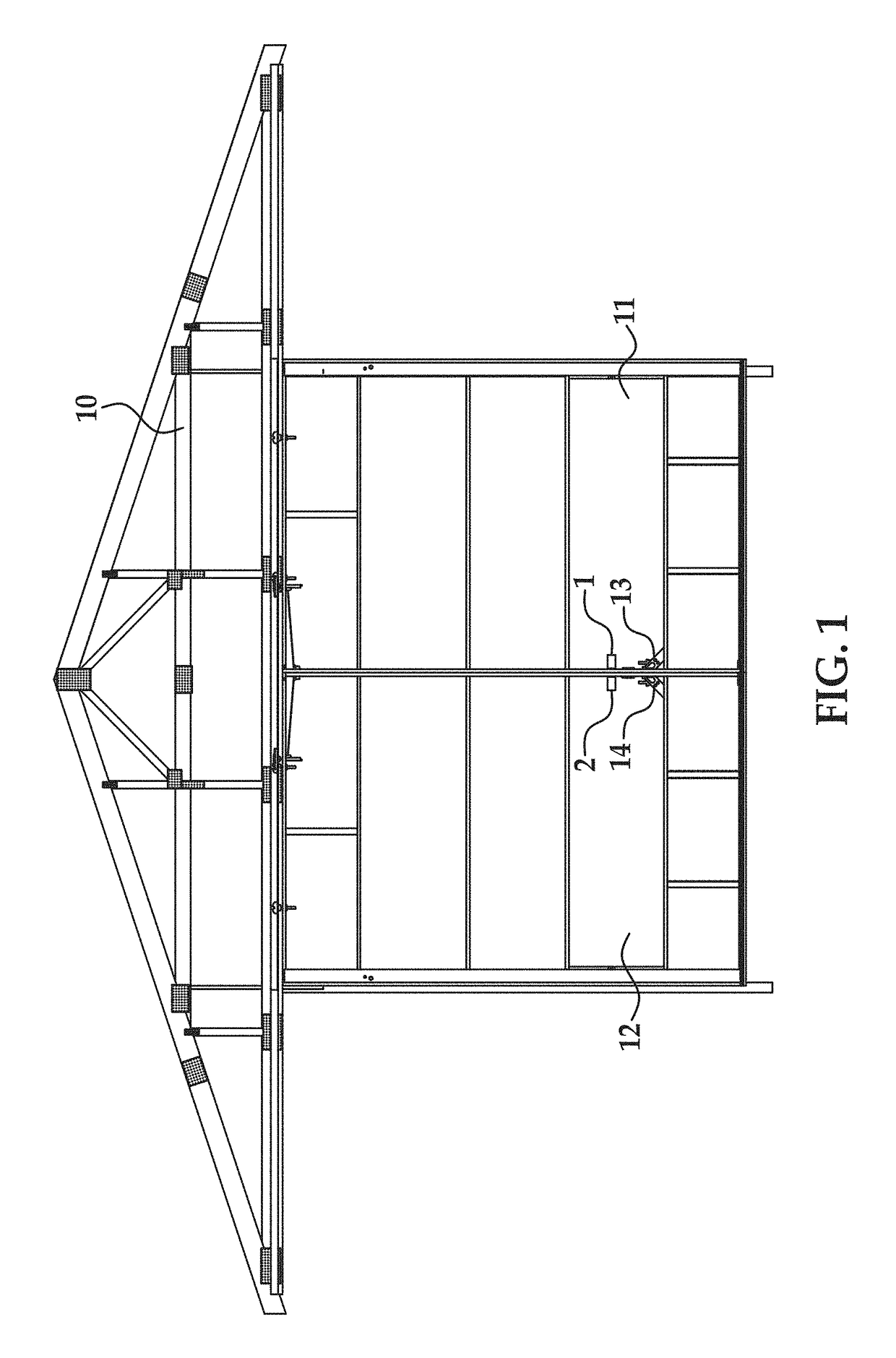Self-latching and self-locking latch system for sliding door panels
a latch system and sliding door technology, applied in building locks, construction, building components, etc., can solve the problems of deformation or damage to the frame or the door itself, wind damage, deformation or damage to the door, etc., to reduce the steps required and simplify the procedures for latching and locking.
- Summary
- Abstract
- Description
- Claims
- Application Information
AI Technical Summary
Benefits of technology
Problems solved by technology
Method used
Image
Examples
Embodiment Construction
[0080]With reference to the drawings, and in operation, the present invention overcomes at least some of the disadvantages of known sliding doors by providing a self-latching, self-locking latch system for use with sliding door panels.
[0081]In one embodiment, the system includes a cable system that runs horizontally to a door jambs and uses a retainer mechanism to keep individual door panels on a floor guide system if they are not latched to each other. For example, in one embodiment, the system may include the features described in FIGS. 22-34.
[0082]The following description contains illustrations of devices, systems and methods according to the invention for purposes of promoting an understanding of embodiments the invention, among other things. It should be understood that the scope of the invention is not limited by these embodiments. Alterations and modifications of the features of the invention, as well as additional applications of its principles in other forms or embodiments...
PUM
 Login to View More
Login to View More Abstract
Description
Claims
Application Information
 Login to View More
Login to View More - R&D
- Intellectual Property
- Life Sciences
- Materials
- Tech Scout
- Unparalleled Data Quality
- Higher Quality Content
- 60% Fewer Hallucinations
Browse by: Latest US Patents, China's latest patents, Technical Efficacy Thesaurus, Application Domain, Technology Topic, Popular Technical Reports.
© 2025 PatSnap. All rights reserved.Legal|Privacy policy|Modern Slavery Act Transparency Statement|Sitemap|About US| Contact US: help@patsnap.com



